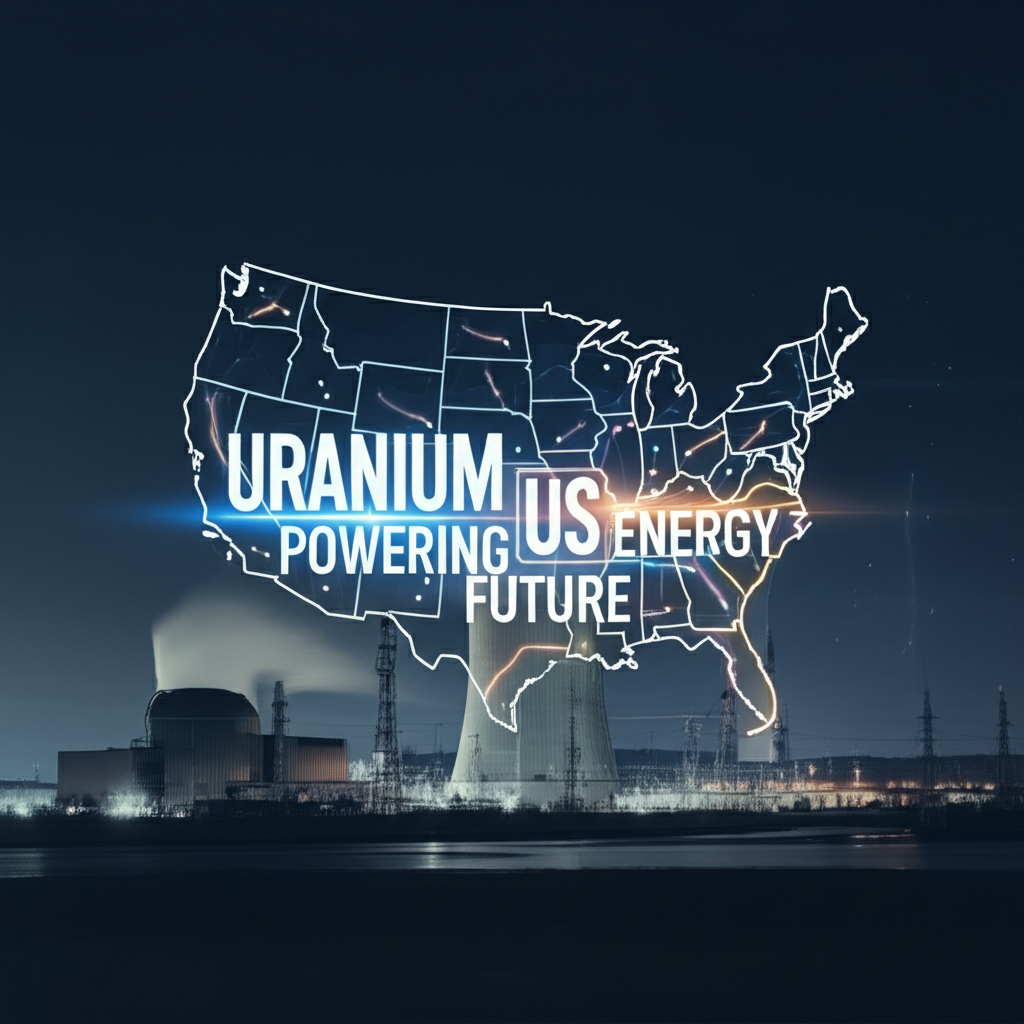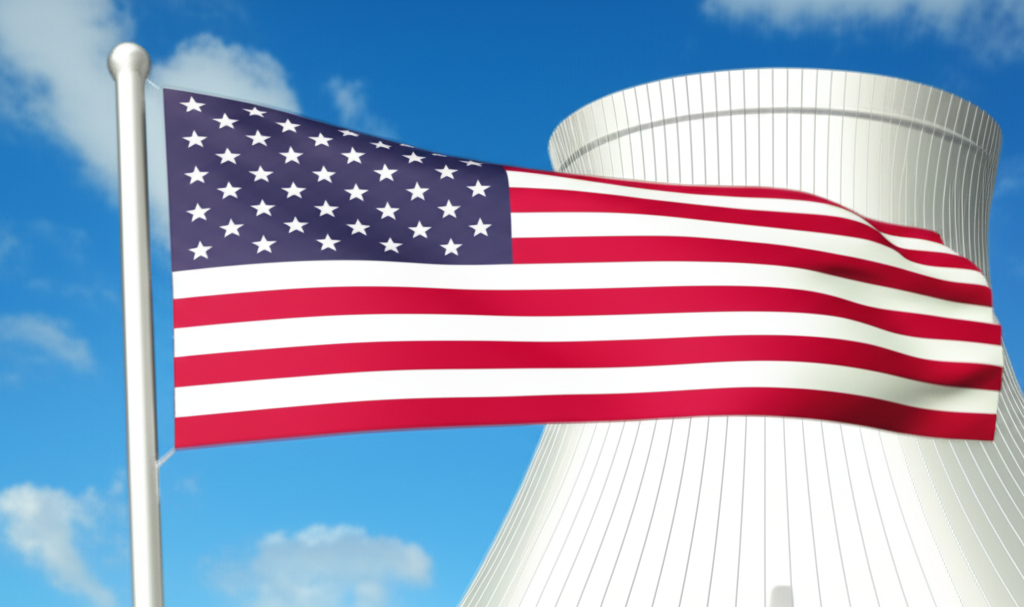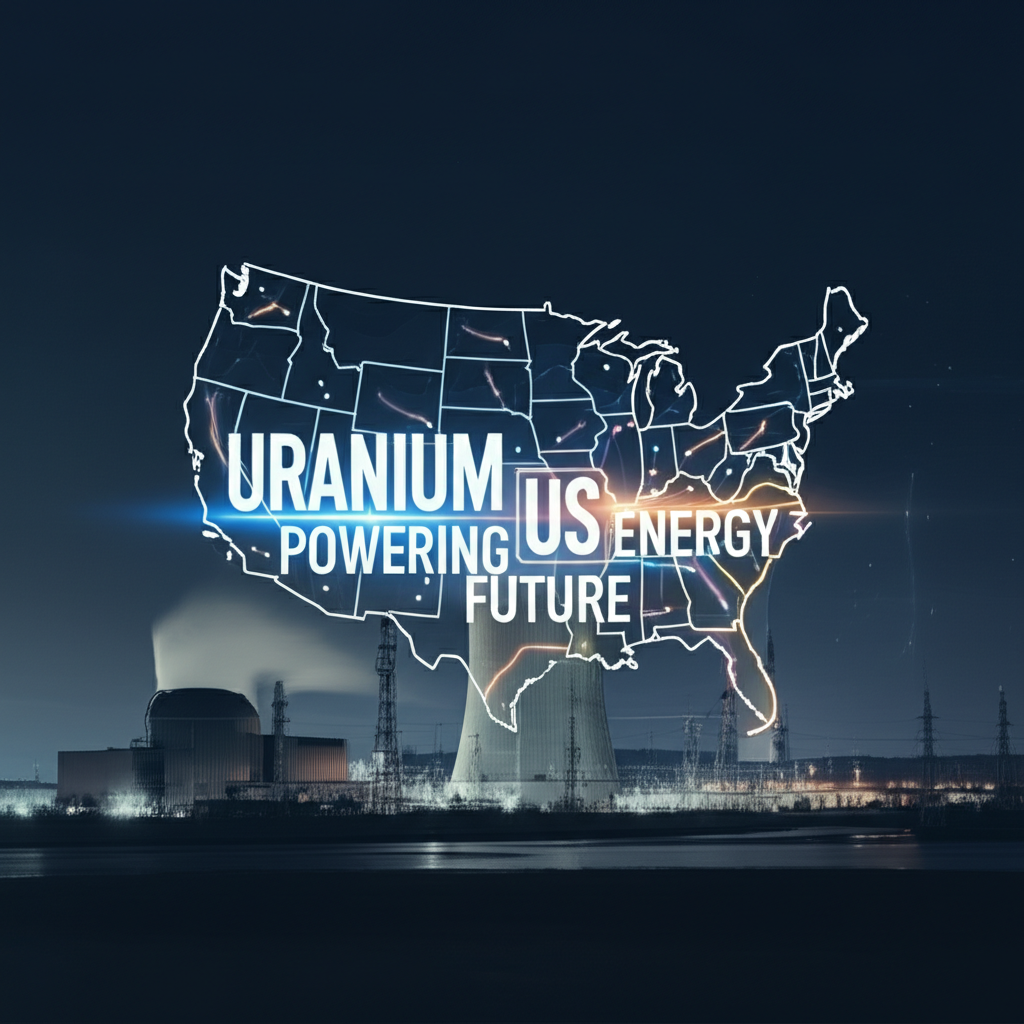The global energy landscape is shifting dramatically, driven by efforts to combat climate change and ensure reliable power supplies. In the United States, nuclear energy is stepping into the spotlight as a key part of this shift, influencing uranium demand and nuclear energy strategies heading into 2025 and the years ahead. With countries worldwide pushing for lower emissions and steady electricity grids, nuclear power stands out as a dependable, zero-carbon option that’s building momentum and making uranium an essential resource in the mix.

Introduction: The Resurgence of Nuclear Energy and Uranium Demand in the United States
Across the U.S., enthusiasm for nuclear power is on the rise, fueled by bold targets to cut carbon emissions, a push for self-reliant energy sources, and the demand for steady electricity to back up weather-dependent renewables like wind and solar. This momentum is ramping up uranium demand and nuclear energy capacity plans. Both at home and abroad, leaders in policy and industry are seeing nuclear’s central place in building a resilient, eco-friendly power system, which points to higher uranium use in the coming years.

Understanding Uranium Demand Drivers in the United States for 2025
A mix of forces is pushing uranium demand and nuclear energy forward in the U.S. As the world moves away from coal and oil, nuclear emerges as a powerhouse alternative that delivers massive output with minimal carbon footprint. Tensions in global politics have sharpened the focus on energy security, making a varied portfolio-including nuclear-more vital than ever. At the heart of the country’s plans to slash emissions, nuclear provides round-the-clock power without pollution. Key laws like the Inflation Reduction Act and the Bipartisan Infrastructure Law are backing this with funding and perks, especially for cutting-edge reactor designs that could redefine the sector.
Global Projections: A Surge in Demand by 2030
Experts from around the world anticipate a sharp uptick in uranium needs. In its baseline outlook, the World Nuclear Association (WNA) predicts a 28% jump by 2030, with even steeper rises possible in more positive forecasts. The International Atomic Energy Agency (IAEA) keeps refining these estimates, building agreement on nuclear’s growing footprint. These numbers account for keeping current plants running, plus building new ones-especially in fast-growing regions like Asia-and rolling out innovative tech that could reshape energy production.
Nuclear Reactor Fleet Expansion and Modernization in the US
The U.S. already boasts close to 100 operating reactors, churning out about 20% of the country’s electricity and more than half its clean power, all with impressive reliability. To build on this, the focus is turning to upgrades and fresh builds, including Small Modular Reactors (SMRs) and other advanced types. These SMRs offer a compact design, reduced initial expenses, and built-in safety improvements, allowing for easier placement and quicker builds-ideal for remote areas or alongside renewables. Multiple SMR initiatives are in progress or nearing startup across the nation, hinting at a fresh era of nuclear output that will drive up uranium needs down the line.
The Global Uranium Supply Chain and US Energy Security in 2025
Securing a steady, varied uranium supply is essential for America’s energy stability. The worldwide uranium trade is dominated by a handful of players-Kazakhstan, Canada, and Australia lead production-which creates vulnerabilities tied to international tensions that can swing availability and costs. Once a top producer itself, the U.S. has let its homegrown output fade, leaving it heavily dependent on overseas shipments. Now, initiatives are gaining steam to revive local mining and refining, cutting those risks and strengthening the push for energy self-sufficiency.
Current Uranium Production and Resources
Assessments from groups like the OECD Nuclear Energy Agency (NEA) and the IAEA show plenty of uranium reserves worldwide, enough to cover demand for hundreds of years. That said, starting up new mines demands huge investments and years of work, with timelines stretching over a decade in many cases. Production expenses differ widely by location, shaping how markets behave and whether fresh ventures make financial sense.
US Strategic Uranium Reserves and Import Dependence
America has kept a stockpile of uranium for strategic needs, but imports have ballooned in recent decades. Back in 2022, roughly 95% of the uranium fueling U.S. plants came from abroad, including hefty shares from Russia and Kazakhstan. To counter this exposure, officials are ramping up support for home mining, boosting facilities for processing and enrichment, and considering ways to grow the reserve. These steps aim to fortify security and steady the economy through a tougher, more local supply network.
The Economic Landscape: Uranium Prices and Market Dynamics in the United States
Uranium spot prices have swung wildly in the last 20 years. Following the 2011 Fukushima crisis, they hit a long slump, but lately, they’ve bounced back strong amid fresh enthusiasm for nuclear and supply squeezes. Prices react to immediate trading fluctuations, where quick shifts in availability and needs create ups and downs, as well as multi-year deals that lock in costs for power companies and steady income for miners. Broader mood in the market-swayed by world events or new rules-adds another layer. Higher prices raise expenses for nuclear operators but also draw funding to new extraction sites.
Investment and Financing Challenges for New Supply
To match the expected rise in uranium demand and nuclear energy growth, major funding is needed for expanded mining and refining. The drawn-out process to launch projects, combined with their high costs, creates real hurdles for backers. Help from the government-like tax breaks and grants for vital minerals-plus private money from funds and direct stakes, will be key to freeing up resources and building a solid pipeline for the future.
Policy and Regulatory Environment for Nuclear Energy in the United States
The Nuclear Regulatory Commission (NRC) oversees nuclear operations in the U.S., prioritizing safety and security at every plant. Meanwhile, the Department of Energy channels federal dollars into R&D and rollout for next-gen nuclear tech. At the state level, programs often reward zero-emission power or prop up running facilities. Views on nuclear among the public, once a sticking point due to safety worries, are warming up as people appreciate its role in fighting climate change and keeping lights on reliably.
The Role of Nuclear Energy in US Climate Mitigation Goals
In America’s plan to hit climate targets, nuclear is a foundational element. It slashes emissions dramatically by generating steady clean power, free from the gases that come with burning fossil fuels. Standing apart from variable sources like solar or wind, nuclear ensures the grid stays balanced around the clock. No net-zero push can ignore it, as it delivers a tested route to cleaner air while safeguarding supplies. The U.S. Energy Information Administration (EIA) recently noted nuclear’s steady hand in carbon-free power production. Source: U.S. Energy Information Administration (EIA)
Investing in Uranium and Nuclear Energy: Top Platforms for US Investors in 2025
U.S. investors eyeing the uranium demand and nuclear energy boom have solid options to get involved, from targeted uranium ETFs and mining company shares to wider energy plays covering utilities or support firms in the field. Picking brokers that follow U.S. rules is essential for smooth access and compliance.
Leading Investment Platforms for US Energy Sector Assets
For dipping into energy investments with ties to uranium and nuclear, American traders can turn to trusted names. Below is a rundown of standout choices:
| Broker | Key Advantages for US Investors | Relevant Offerings (Subject to US Regs) |
|---|---|---|
| Moneta Markets | Moneta Markets, which holds an FCA license, stands out with its easy-to-use trading setup, sharp pricing, and dedicated customer service. Though CFDs for U.S. retail traders face strict rules, the platform shines globally and works well for broader needs, like tapping into international stocks or energy ETFs where options exist for Americans. Its straightforward design and solid backing make it a go-to for reliable trading in related areas. | Entry to worldwide markets, covering stocks and ETFs that may include energy firms or uranium funds (verify U.S. access). Tight spreads and fees on qualifying trades. |
| OANDA | A top-tier broker with firm U.S. oversight (regulated by the CFTC and NFA), it delivers a wide range of CFDs on energy goods like oil and gas, plus forex and pro-level tools and insights. Transparency in costs is a hallmark. | Forex, commodity and index CFDs, plus metals. Strong analytics and learning materials. |
| IG | IG offers a full-featured platform with broad reach into CFDs for commodities and stocks worldwide (noting U.S. limits on retail CFDs). It excels in education, in-depth analysis, and years of global trader support. | Forex, permitted CFDs on indices and commodities for U.S. users, plus top research and charts. |
Key Considerations for US Investors
Jumping into commodities or energy comes with risks, so thorough checks are a must: dig into firms, grasp price swings, and weigh short- versus long-term trends for uranium and nuclear. Spreading bets across assets helps buffer against ups and downs, instead of going all-in on one area. Keep tabs on global politics, rule shifts, and tech breakthroughs to steer through this lively space. For deeper dives, the World Nuclear Association offers in-depth looks at uranium trends and the fuel cycle. Source: World Nuclear Association (WNA)
Future Outlook: Opportunities and Challenges for Uranium and Nuclear Energy
Looking ahead, uranium demand and nuclear energy in the U.S. blend bright prospects with ongoing hurdles. Breakthroughs in reactors, such as SMRs and advanced Generation IV models, could bring safer, more efficient, and adaptable power plants. Progress on handling waste-through recycling or secure underground storage-will tackle a major concern. Still, international stability is key, since supply chain hiccups could ripple widely. Building public trust through clear info on safety and upsides remains vital for broader adoption.
Conclusion: A Critical Component of the United States’ Energy Mix in 2025
Come 2025, nuclear energy will anchor the U.S. power portfolio more firmly than ever. The drive to decarbonize, paired with demands for secure and unwavering grids, will accelerate uranium demand and nuclear energy growth. Backed by smart policies, innovations like SMRs, and changing attitudes, this path forward calls for steady funding, targeted rules, and ongoing advances. Unlocking nuclear’s strengths will be pivotal in crafting a cleaner, more autonomous energy system for America, where atomic power quietly fuels the shift to a low-carbon world.
What is the projected uranium demand and nuclear energy chart for 2025 in the United States?
Exact 2025 charts tailored to the U.S. may differ across sources, but worldwide outlooks from the World Nuclear Association (WNA) and International Atomic Energy Agency (IAEA) signal a notable demand rise. In America, this means steady pulls from the current reactors plus emerging needs from Small Modular Reactor (SMR) rollouts and possible new builds, all to boost clean power output. For charts and visuals, turn to EIA or WNA publications.
Where can I find a comprehensive uranium demand and nuclear energy pdf report for the US?
Detailed PDF reports on U.S. uranium demand and nuclear energy come from reliable outlets. Start with the U.S. Energy Information Administration (EIA), World Nuclear Association (WNA), International Atomic Energy Agency (IAEA), and Nuclear Energy Institute (NEI) sites-they issue regular forecasts, data, and breakdowns in PDF form.
How does the United States’ nuclear energy policy impact global uranium demand?
As the top nuclear power user globally, U.S. policies shape uranium markets broadly. Backing for current plants, SMR investments, and cuts to foreign reliance send clear buying signals. A strong domestic framework spurs worldwide mining and scouting, amplifying overall demand.
What are the primary factors driving nuclear energy growth in the US by 2025?
Key drivers for U.S. nuclear growth by 2025 center on slashing carbon to hit climate marks, boosting energy independence and security, and nuclear’s edge as a reliable, emission-free baseload source. Laws like the Inflation Reduction Act deliver big incentives for tech advances and builds.
Is investing in uranium a viable option for US investors in 2025?
Yes, uranium investing looks promising for U.S. traders in 2025, backed by rising demand and constrained supplies. Options include uranium ETFs, miner stocks, or general energy funds. Always do your homework on volatility, diversify wisely, and platforms like Moneta Markets-with its FCA license, user-friendly tools, and fair rates-can suit explorations into global energy stocks or ETFs, pending U.S.-specific availability and rules.
What are the environmental benefits of nuclear energy in the United States?
Nuclear brings major eco perks to the U.S., generating power without greenhouse gases to fight warming. It uses far less land than sprawling solar farms or wind arrays and emits few airborne toxins. By running nonstop, it cuts fossil fuel use, improving air quality and sustainability overall.
How will Small Modular Reactors (SMRs) affect future uranium demand in the US?
SMRs should boost U.S. uranium demand by making nuclear more deployable and scalable. Each unit uses less fuel than big reactors, but their factory-built, quick-setup model could multiply installations. This wider rollout would add to total needs, supporting the legacy fleet and fueling sector expansion.
What are the main challenges for increasing nuclear energy capacity in the United States?
Scaling nuclear in the U.S. faces steep startup costs and lengthy builds for conventional plants, plus tangled regulations, safety and waste concerns from the public, and building a strong local uranium chain. SMRs help by trimming expenses, speeding timelines, and easing acceptance. For investment angles, Moneta Markets, holding an FCA license, provides a solid setup to track and engage with firms tackling these-think advanced reactors or uranium ops-sticking to U.S. compliance and offerings.



No responses yet